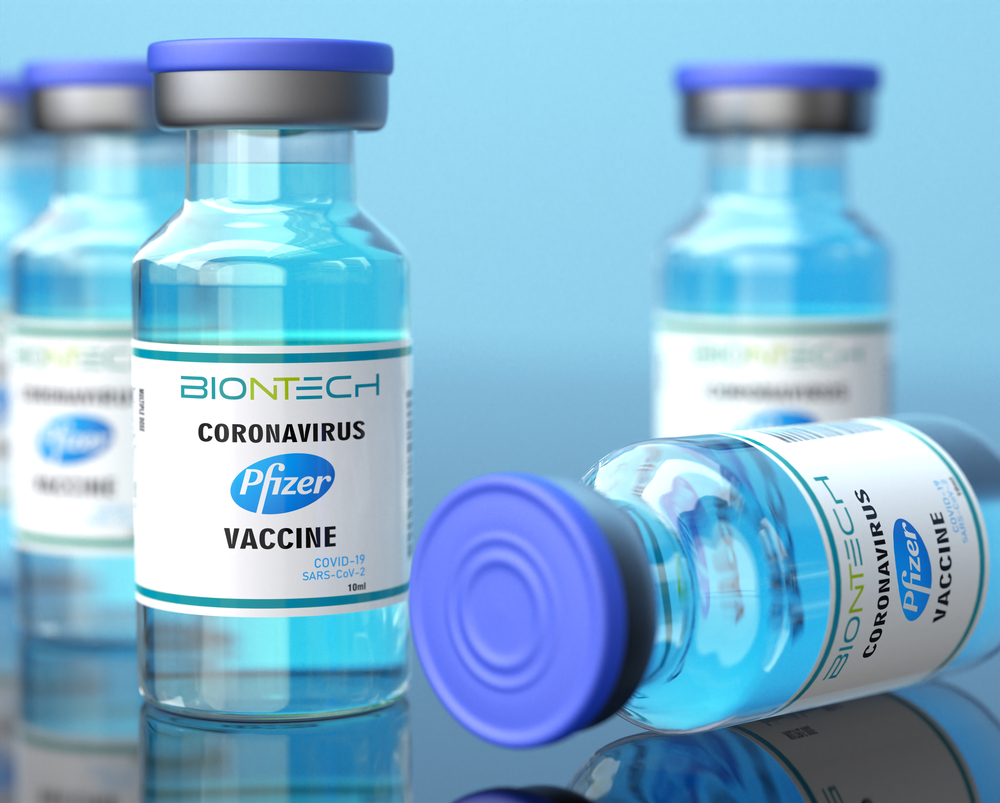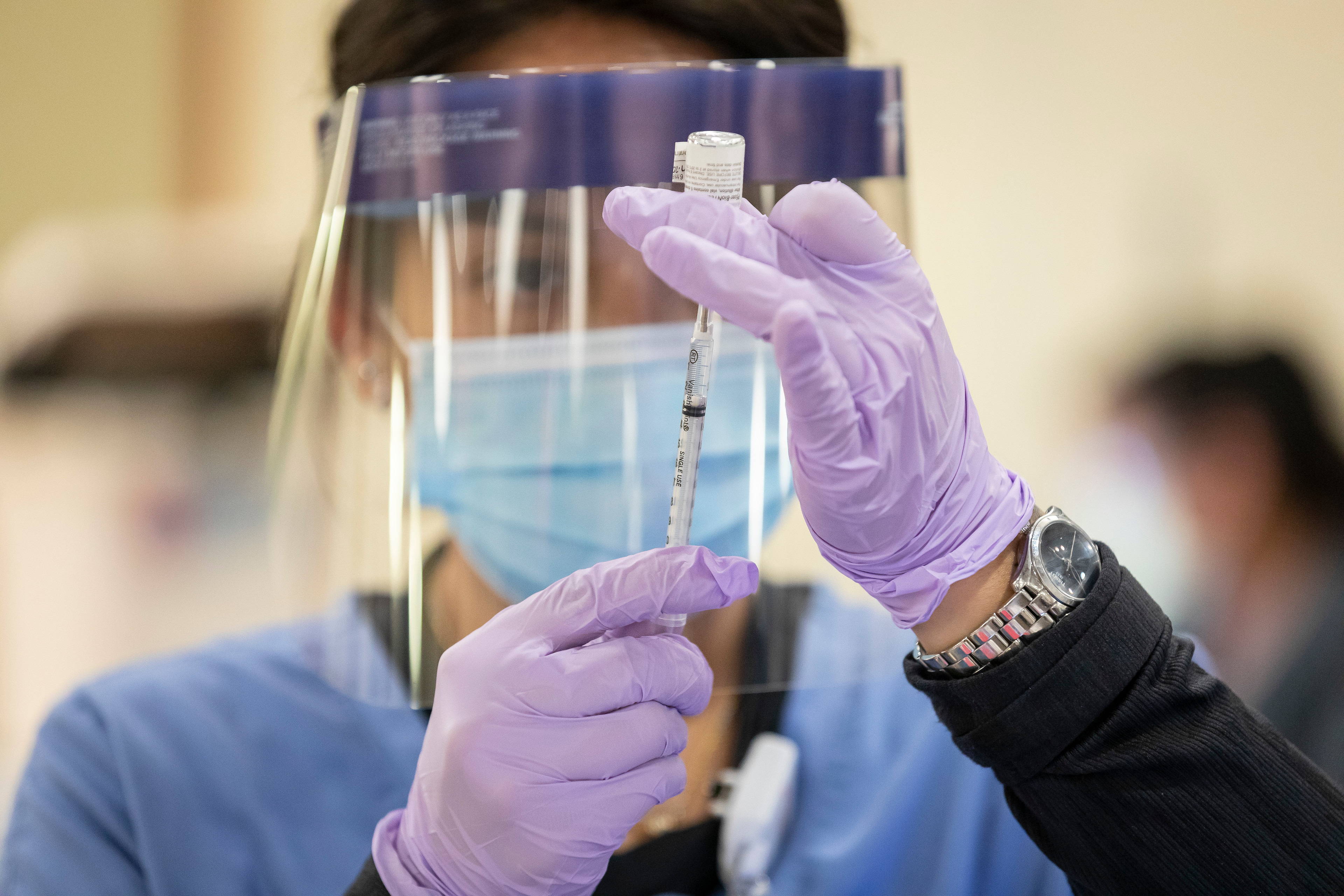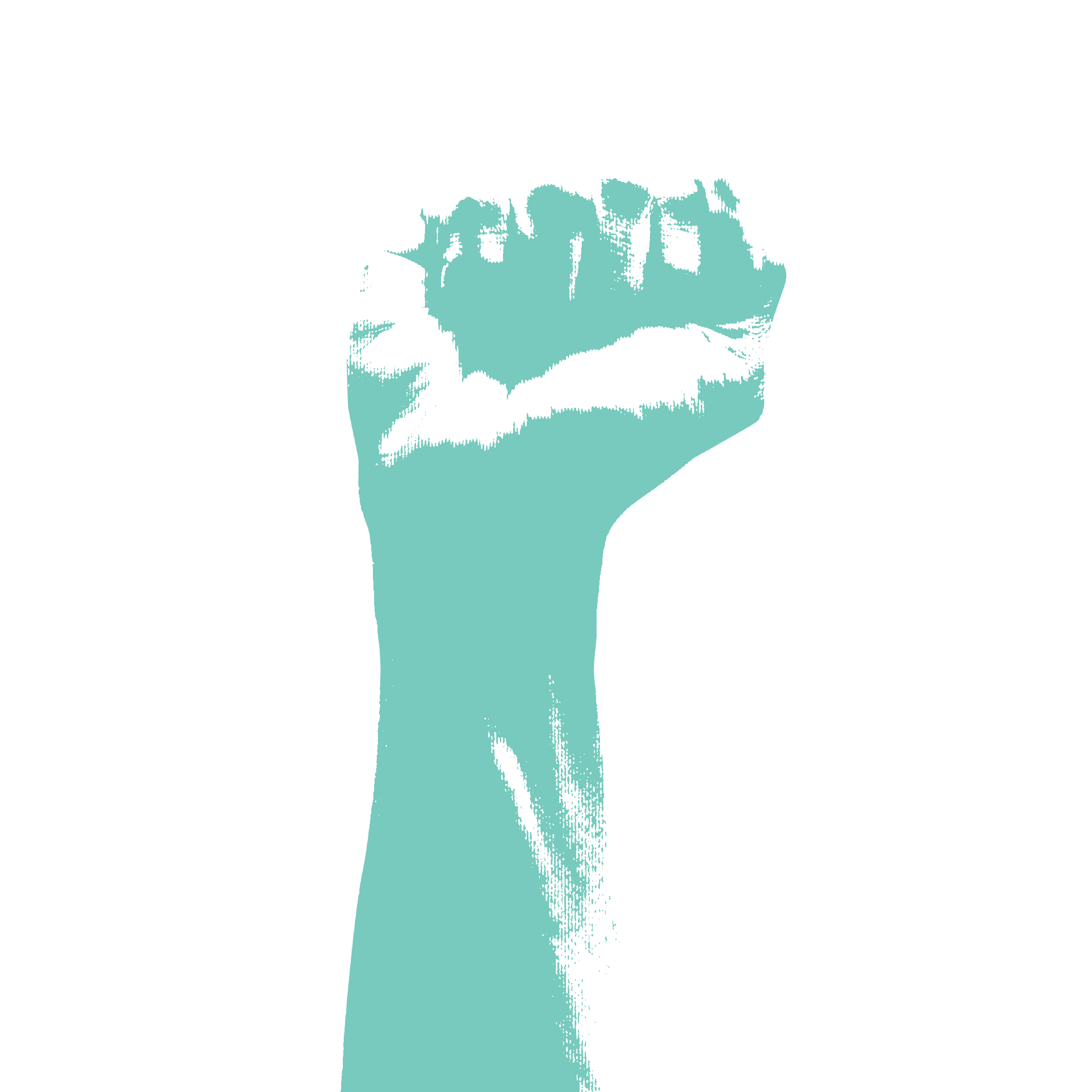
You may be uncertain about what the COVID-19 vaccine rollout means for you.
We'll be answering questions about when and where people are going to get vaccinated and how the distribution plans for the state, Cook County and Chicago will impact you. We'll dig into some of the science behind the vaccine and explain how it works.
How many doses of the vaccine have been administered in Illinois?
Illinois' first week of distribution began Dec. 14. Since then, the state has reported 650,804 people have gotten at least one dose of a COVID-19 vaccine as of Jan. 25. That's roughly 5.1% of the state's population. Of those people, 137,990 have also gotten a second dose, meaning 1.4% of the state's population is now fully vaccinated.
Chicago is posting daily vaccination tallies on a web page dedicated to the rollout. (The page lags a few days, and some data only includes tallies of Chicago residents.)
Both the state of Illinois and the city of Chicago get weekly shipments of the vaccine. Data showing how many doses have been shipped from each company, Moderna and Pfizer, is updated by the CDC weekly.
Who is allowed to get a COVID-19 vaccine right now?
In Illinois, the vaccine is being administered to health care workers and people who live and work in long-term care facilities, like nursing homes. There are about 800,000 people in those two groups. The state estimates about 490,000 people are classified as health care workers and 360,000 live or work in long-term care facilities, like nursing homes. The federal government is managing the latter with existing contractors, including Walgreens and CVS.
People age 65 and older and a specifically defined list of frontline essential workers are also eligible, as of Jan. 25. In Chicago, people over the age of 75 with underlying health conditions will be prioritized, but anyone over 65 is eligible. Illinois is deviating from the federal guidelines to include a slightly lower age threshold in this group, since Black and Latino residents are dying with COVID-19 at younger ages.
There are about 3.2 million people in this group, sometimes referred to as "1b" by the CDC and local officials. It's a massive number and will likely take a while to get through.
State estimates indicate there are about 800,000 people over the age of 75 and an additional 1.1 million between the age of 65 and 74.
There are also 1.2 million "frontline essential workers."
People considered to be in that group of workers include: firefighters, police officers, corrections officers, teachers and school support staff, and daycare workers. It also includes people who work in food and agriculture, the postal service, manufacturing, grocery stores, and public transit.
Starting Jan. 25, state officials say people in this 1b group can start lining up for vaccines.
Who is eligible next for the COVID-19 vaccine in Illinois?
Chicago's plan posted online indicates the next in line — remaining essential workers and people over the age of 16 with underlying medical conditions — may be able to get vaccinated starting March 29. The general population could start as soon as May 31.
When can I get a vaccine?
This is the big question, and it depends on how much vaccine is available, and whether you're in the first two priority groups. Right now, public officials say there's still so little vaccine that it will take months to get through groups 1a and 1b, which includes health care workers, nursing home facility residents and staff, certain frontline essential workers and people aged 65 and over.
The state has estimated that the vaccines won't be available to the general public for months.
Where will I get a vaccine?
Most likely, at your doctor's office. If you don't have a primary care doctor, there are hundreds of community clinics and federally-qualified health centers that are authorized to give vaccines. Similar to how the flu shot is distributed, people will also eventually be able to go to local pharmacies, like Walgreens and Jewel-Osco, to get vaccinated.
Chicago has six mass vaccination sites at the following City College campuses: Malcom X, Truman, Daley, Arturo Velazquez, Olive-Harvey, and Kennedy-King College. Currently, those sites are by appointment only for health care workers who are not employed at a hospital.
There are seven mass vaccination sites in suburban Cook County operated with help from the Illinois National Guard. They're at the following Cook County Health locations: North Riverside Health Center, Robbins Health Center, Morton East Adolescent Health Center, Cottage Grove Health Center, Blue Island Health Center, Arlington Heights Health Center and the Tinley Park Convention Center. These are all for now by appointment only.
Can I register in advance so I know when it's my turn to get vaccinated?
Not if you live in Chicago. City officials have directed people to sign up for additional information at ChiCOVIDCoach, but you won't be able to register for appointments there.
Suburban Cook County residents can register here. Lake County has a registration form here. Will County residents can register here. Kane County has a form to sign up for vaccine updates. DuPage County also has an information sign up. McHenry County allows health care workers to register for appointments and also allows residents to sign up to receive updates here.
If I get the vaccine, will I be protected from COVID-19 right away?
No. You'll need two shots, and similar to the flu vaccine, experts say it can still take a few weeks for the vaccine to work after the second shot. And, getting vaccinated doesn't mean you'll be 100% protected, just like when you get the flu shot. Everyone is being advised to continue to maintain social distancing and wear masks for some time.
If I have already contracted COVID-19, can I skip the vaccine?
No. Experts say everyone should still get vaccinated. We don't know enough about the virus yet to understand if we're protected from getting COVID-19 again after we've had it.
Do I have to get the COVID-19 vaccine?
No. There is no state or federal or city requirement that you get vaccinated. But if you do not take it when available to you, experts say you risk getting the virus and spreading it to others. And private businesses may eventually have the authority to require workers be vaccinated before coming back to work in person.
Which vaccines have been authorized so far?
The Pfizer and Moderna vaccines are the first to have received emergency use authorization in the United States. Vaccines from AstraZeneca and Johnson & Johnson are still awaiting for that authorization from the Food and Drug Administration.
Is the vaccine free?
Perhaps. The vaccine itself is supposed to be free. If you get it from a city or state-operated vaccination site, like at a mass vaccination event, it should be at no cost to you. But medical professionals in other settings may be able to charge an administration fee for the shot. Vaccine providers are supposed to be able to get that cost reimbursed with the patient's private or public insurance.
How do we know this vaccine is safe?
All medicines, including vaccines, undergo rigorous phased trials before they're given to the general public. The COVID-19 vaccine has been developed and approved quickly because this is an emergency. That doesn't mean scientists cut corners. This is what it takes:
-
Pre-clinical trials see if a vaccine works in animal models like monkeys, which have a physiology similar to humans.
-
Phase I trials test if a vaccine is safe on a small group of participants. Scientists see if those people develop antibodies.
-
Phase II trials determine which dose is most effective for generating antibodies while remaining tolerable for patients.
-
Phase III trials, or randomized control trials, are what you've heard about in the news. They take a huge number of participants (the Pfizer trial had more than 40,000) and divide them into two groups. One group gets the vaccine and the other group gets a placebo, or a fake. Because it's unethical to expose people to COVID-19, researchers waited for participants to get sick out in the world. Then they compared the number of COVID-19 cases between the two groups.
In the Pfizer study, the vast majority of the participants who developed COVID-19 were in the placebo group, a statistically significant number that shows the vaccine works (that's where the 90% effective figure comes from). It's worth nothing that's astoundingly high—nobody expected the COVID-19 vaccine to be this effective.
The Food and Drug Administration set its benchmark at about 50% effectiveness.
Are there side-effects?
That's an imprecise term. If you've ever felt flu-like after getting a flu shot, that actually shows a vaccine is working.
Vaccines activate your immune system and your body needs to get a little sick to develop antibodies. Headaches, fevers, aches and pains are just signs our body is responding. So while you may experience similar symptoms after getting a COVID-19 vaccination, it's absolutely nothing to fear.
Can the vaccine give you COVID-19?
No. It's impossible.
If someone is vaccinated, can they still catch COVID-19?
We don't know yet, but probably not. We know the vaccines are very effective at preventing illness, but don't know for sure if it prevents transmission because that was not part of any clinical trial.
Researchers only evaluated people once they became sick, instead of regularly testing all participants for COVID-19 to find potentially asymptomatic patients.
How long will it take for someone to obtain immunity from the vaccines?
The first dose of the Pfizer vaccine grants partial immunity and is about 50 percent effective at protecting against COVID-19. The second shot three weeks later brings its effectiveness up to between 90 and 95 percent.
But the shot, or shots, are not a free ticket to go about life normally. The vaccines are highly effective, but not 100% effective, and we don't know if they keep people from spreading the virus. Experts still say mask-wearing, social distancing and washing hands will be necessary for everyone, including those who get the vaccine.
I've heard some of the vaccines are 'mRNA' vaccines. What are those?
mRNA vaccines are the most streamlined vaccination method we've come up with so far. Their simplicity is brilliant, but the speed at which we've developed them is thanks to decades of foundational research on coronaviruses following the SARS and MERS outbreaks.
To understand how mRNA vaccines work, you have to first know the difference between DNA and mRNA, or messenger RNA.
Georgetown Microbiologist Julie Fischer explained it this way: DNA is like a master blueprint that never, ever leaves the wall of the drafthouse, while mRNA is the copy taken to a construction site and thrown away. mRNA has a thankless job. Our cells read this genetic information and then shred it to bits.
mRNA with the genetic instructions to COVID-19's spike proteins, which it uses to latch onto and infect our cells, is the key to the Moderna and Pfizer vaccines and pretty much the Death Star plans for COVID-19. But to prevent our murderous enzymes from tearing the vaccine apart, both companies developed a fatty, lipid shell to protect it once injected into the body.
Once injected, the lipid shells fuse to our cells and release the mRNA into their cytoplasm. Our cells read the instructions and begin producing the COVID-19 spike proteins. The mRNA from the vaccine is destroyed.
The spikes will then grow and break off from our vaccinated cells. Immune cells, called helper t-cells and antigen presenting cells, which function at the hall monitor of the body, sound the alarm on the foreign objects, collecting and presenting them to other immune cells. T-cells, the enforcers, learn to destroy them. B-cells learn to make antibodies, which neutralize the spike proteins.
What makes the mRNA vaccine exciting?
mRNA vaccines are a brand new technology decades in the making that has distinct advantages over traditional production methods —like speed.
These new vaccines can be produced at a much faster rate because nothing is being grown. Scientists instead synthesize molecular instructions for our cells to make COVID-19's distinctive spike protein, which our body's immune system creates antibodies for and destroys, protecting us against the virus.
Vaccines that use attenuated, or weakened, versions of a virus, like the flu vaccine, have to be grown in cells or eggs. There are painstaking, laborious steps to creating these vaccines, production is slow by comparison and it is harder to produce at scale.
None of the COVID-19 vaccines awaiting Food and Drug Administration approval utilize this method. Pfizer and Moderna both made mRNA vaccines, while AstraZeneca and Johnson & Johnson developed what are called recombinant vaccines, which disguise a harmless common cold virus as COVID-19 to train our immune system.
All methods ultimately achieve the same goal of immunity, but these new technologies will likely change the future of vaccine production and development.
COVID-19 Update: The connection between local and global issues–the Pulitzer Center's long standing mantra–has, sadly, never been more evident. We are uniquely positioned to serve the journalists, news media organizations, schools, and universities we partner with by continuing to advance our core mission: enabling great journalism and education about underreported and systemic issues that resonate now–and continue to have relevance in times ahead. We believe that this is a moment for decisive action. Learn more about the steps we are taking.












